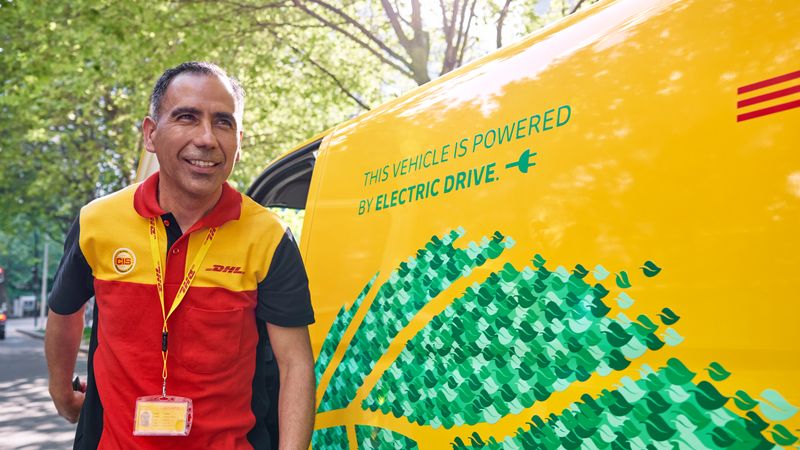Grow your business with the Discover newsletter
Logistics advice & insights straight to your inbox
Subscribe now
Sustainability is long past the point of being a marketing buzzword; it is now a crucial pillar of a business’s success.
In a 2023 Deloitte survey of APAC consumers, 52% of respondents had already modified their purchasing habits in response to climate change concerns, with a significant portion (40%) willing to incur higher costs for eco-friendly options.
This shift underscores an emerging consumer preference, highlighting sustainability as a competitive edge, particularly in Singapore's vibrant and challenging marketplace and the broader APAC region. Singaporean businesses hoping to expand their reach across the APAC region need to meet these consumer demands and preferences to remain competitive, no less in a cutthroat ecosystem buoyed by the rise of e-commerce platforms.
On a governmental level, Singapore is also striving to achieve net-zero emissions by 2050, adding another push factor for businesses to seek innovative solutions to reduce their carbon footprint and contribute to a greener future.
Of the various sustainability measures available to businesses today, one solution gaining traction is carbon insetting, a proactive approach beyond carbon offsetting measures. Find out about the benefits of carbon insetting for businesses in Singapore and explore how DHL Express can be your ideal partner in this journey towards sustainability.
Before delving deeper into the advantages and implementation strategies of carbon insetting, it's essential to grasp what carbon insetting is and how it differentiates from other environmental sustainability practices.
Carbon insetting represents a groundbreaking approach within the sustainability domain, focusing on internal actions to reduce carbon emissions. This CO2 reduction method is distinct from carbon offsetting, which involves compensating for emissions by investing in external projects that reduce greenhouse gases elsewhere.
Carbon insetting is rooted in the principle of directly improving the environmental footprint of a business's operations and supply chain. Instead of looking outward for solutions, companies invest in projects that reduce carbon emissions within their own operational boundaries or along their value chains. Examples of carbon insetting could involve enhancing energy efficiency, transitioning to renewable energy sources, or adopting sustainable agricultural practices in the supply chain.
Carbon insetting distinguishes itself by offering a more straightforward, transparent approach to shrinking a company's carbon footprint versus traditional offsetting methods. This strategy enables direct investment in emission reduction projects through supply chain management or owned operational frameworks. The result is a procurement process that is not only simplified but one that affords businesses increased oversight and clarity regarding their sustainability efforts.
The adaptability of carbon insetting to existing business models is one of its most compelling benefits. Unlike other sustainability initiatives that may require significant changes or disruptions, carbon insetting allows businesses to adopt sustainable practices without compromising efficiency or productivity. By identifying emission hotspots within operations, businesses can implement targeted strategies to reduce carbon emissions and enhance overall efficiency.
Investing in energy-efficient technologies and practices is essential for reducing carbon emissions and achieving long-term sustainability goals. Carbon insetting encourages businesses to embrace renewable energy sources, optimise resource utilisation, and implement energy-saving measures. By improving overall energy efficiency, businesses not only reduce their environmental impact but also realise cost savings and operational efficiencies.
Carbon insetting provides a holistic framework for tackling both direct and indirect emissions throughout a company’s operations, supply chain, and broader value chain. This comprehensive approach enables the identification and exploitation of reduction opportunities across various domains, including transport, manufacturing, and waste management, thereby delivering extensive environmental benefits.
With initiatives like the Singapore Green Plan 2030 driving a nationwide sustainability agenda, Singaporean businesses have a unique opportunity to integrate carbon insetting efforts into their operations and play a pivotal role in advancing the country's larger environmental objectives. By contextualising carbon insetting within the broader framework of Singapore's sustainability initiatives, businesses can not only demonstrate their commitment to environmental responsibility but also contribute and commit to achieving national priorities.
According to UOB’s ASEAN Consumer Sentiment Study 2023, 56% of Singaporean respondents self-reported as already supporting brands that follow sustainable practices, while an additional 20% intended to do so in the near future. As local consumer awareness and demand for eco-friendly products and services continues to grow, carbon insetting can be a powerful tool for businesses looking to differentiate themselves in the market. By showcasing their dedication to sustainability through tangible actions such as carbon insetting initiatives, businesses can enhance their brand reputation, attract environmentally conscious consumers, and gain a competitive edge in the marketplace.
For small and medium-sized enterprises (SMEs), carbon insetting presents a financially viable route to sustainability, circumventing the prohibitive costs associated with traditional offsetting measures. By focusing on internal efficiencies and Scope 3 emission reductions (i.e. all other indirect emissions upstream or downstream in a company’s value chain), SMEs can engage in meaningful environmental stewardship without compromising on their bottom line.

As a leading supporter of green logistics solutions, DHL Express Singapore is committed to helping companies integrate sustainability into their business strategy through our GoGreen Plus programme. This green shipping sustainable solutions empowers businesses to reduce their environmental impact and enhance their corporate social responsibility efforts, for example, through detailed carbon reports for documented accountability.
With GoGreen Plus, businesses can reduce 30% of carbon emissions associated with their shipments through the use of Sustainable Aviation Fuel (SAF) instead of traditional aircraft fuel. This way of lowering a business’ Scope 3 emissions doesn’t compromise on providing express delivery to customers, allowing businesses to maintain their competitive edge.
Opting in to GoGreen Plus is also, quite literally, as easy as ticking a box, as businesses can just add it to a shipment via the Optional Services menu in the MyDHL+ platform. This seamlessly integrates it into your existing operations, for an effortless and fuss-free step forward in your company’s sustainability journey.
Open a business account with DHL Express today and embark on your carbon insetting journey towards a greener, more sustainable tomorrow. Together, we can make a positive impact on the planet while driving business success and innovation.